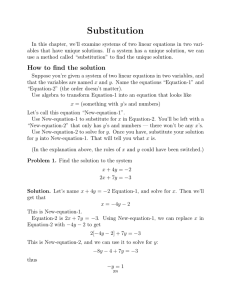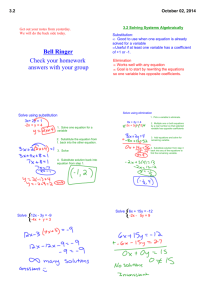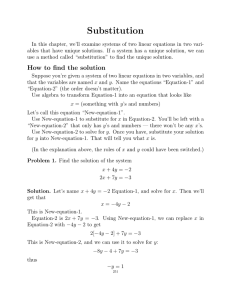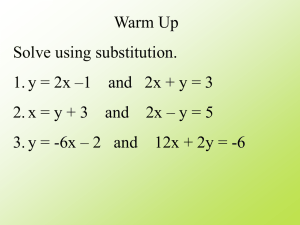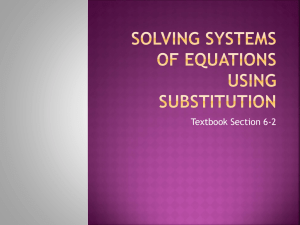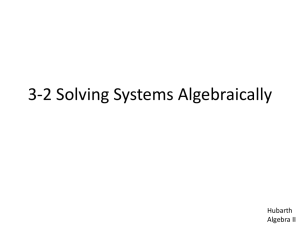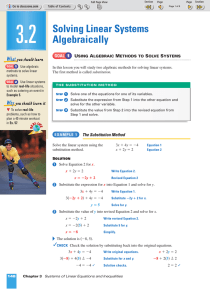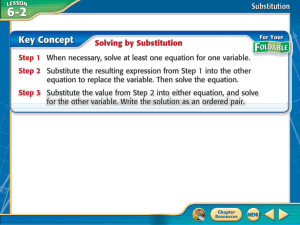Alg 2 H 3.2 Notes
advertisement
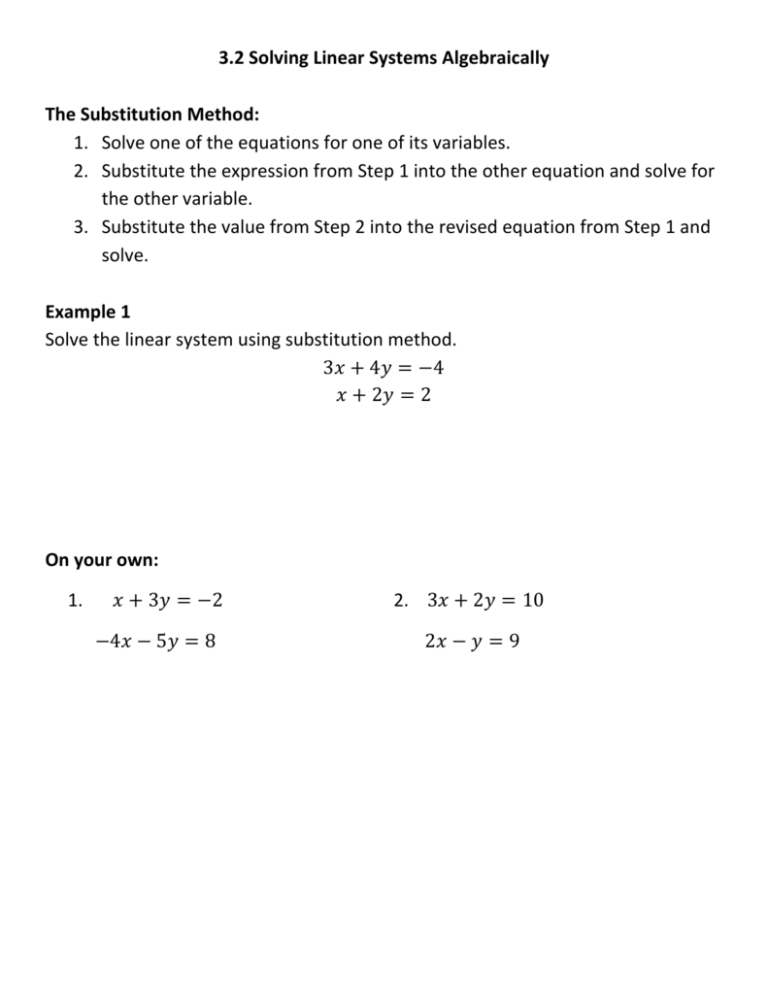
3.2 Solving Linear Systems Algebraically The Substitution Method: 1. Solve one of the equations for one of its variables. 2. Substitute the expression from Step 1 into the other equation and solve for the other variable. 3. Substitute the value from Step 2 into the revised equation from Step 1 and solve. Example 1 Solve the linear system using substitution method. 3𝑥 + 4𝑦 = −4 𝑥 + 2𝑦 = 2 On your own: 1. 𝑥 + 3𝑦 = −2 −4𝑥 − 5𝑦 = 8 2. 3𝑥 + 2𝑦 = 10 2𝑥 − 𝑦 = 9 The Linear Combination Method 1. Multiply one or both of the equations by a constant to obtain coefficients that differ only in sign for one of the variables. 2. Add the revised equations from Step 1. Combining like terms will eliminate one of the variables. Solve for the remaining variable. 3. Substitute the value obtained in Step 2 into either of the original equations and solve for the other variable. Example 2: Multiplying One Equation Solve the system using the linear combination method. 2𝑥 − 4𝑦 = 13 4𝑥 − 5𝑦 = 8 Example 3: Multiplying Both Equations Solve the system using the linear combination method. 7𝑥 − 12𝑦 = −22 −5𝑥 + 8𝑦 = 14 On your own: 1. 5𝑥 − 2𝑦 = 12 −9𝑥 − 8𝑦 = 19 2. 4𝑥 − 3𝑦 = 0 −10𝑥 + 7𝑦 = −2 Example 4: Linear Systems with Many or No Solutions Solve the linear system: a. 𝑥 − 2𝑦 = 3 b. 6𝑥 − 10𝑦 = 12 2𝑥 − 4𝑦 = 7 −15𝑥 + 25𝑦 = −30 Using Linear Systems in Real Life Example 5: Using a Linear System as a Model A caterer is planning a party for 64 people. The customer has $150 to spend. A $39 pan of pasta feeds 14 people and a $12 sandwich tray feeds 6 people. How many pans of pasta and how many sandwich trays should the caterer make?
